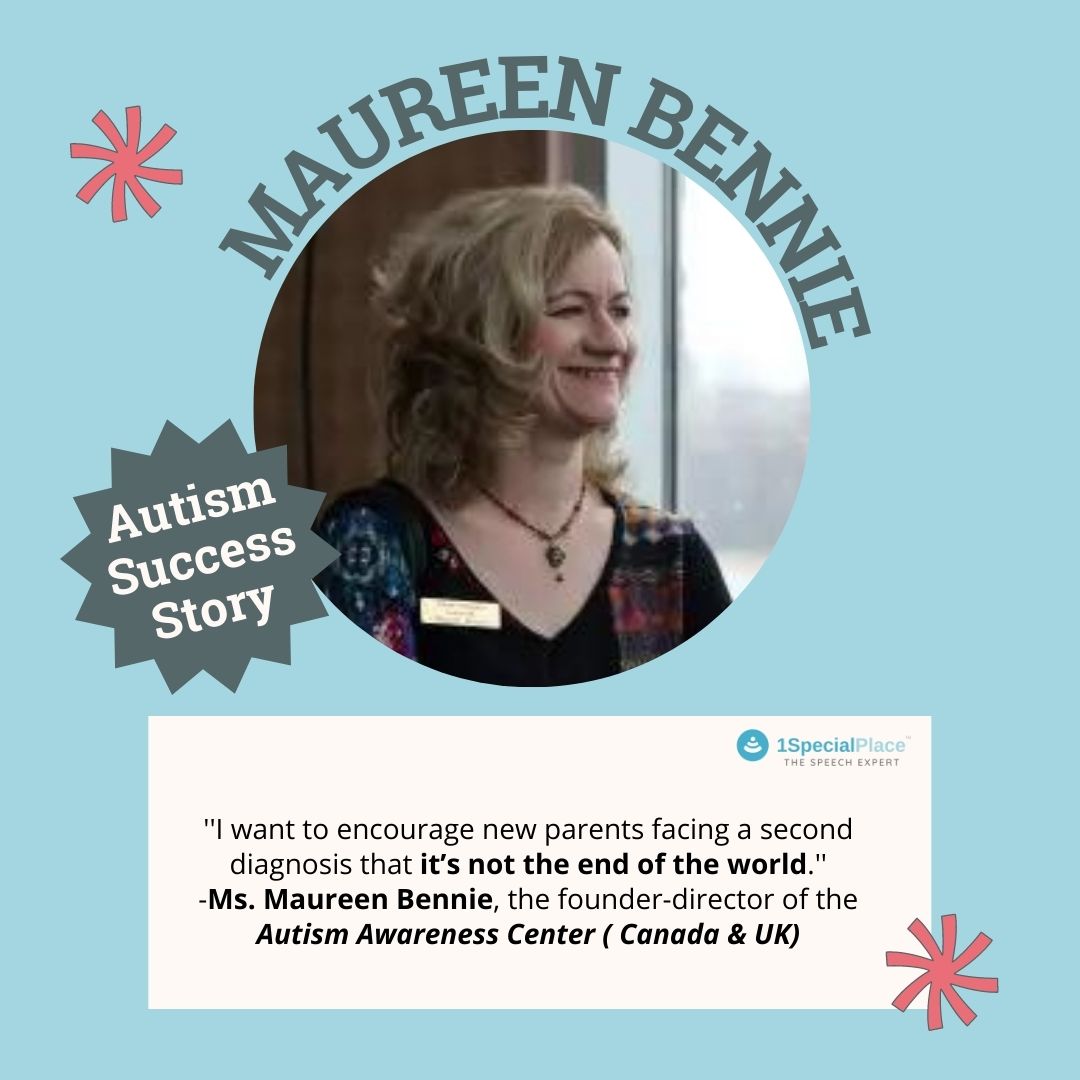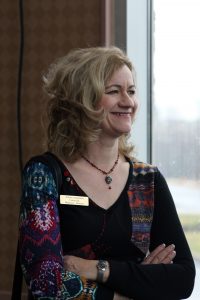
Transforming the World with Autism Awareness Center
Transforming the World with Autism Awareness Center
We bring to this wonderful story of Ms. Maureen Bennie, the founder-director of the Autism Awareness Center, United States of America. Ms. Bennie’s vision for the future of Autistic people is what led her to establish the Autism Awareness Center. She is transforming the world with Autism Awareness Center. The center believes education is the key to success in assisting neurodiverse people. They host several conferences, and webinars, and publish blogs and books easily accessible to people. Their website has every resource a person may need to understand and navigate Autism. Ms. Bennie strongly believes that open-access information on her website will help thousands all over the world.
I want to encourage new parents facing a second diagnosis that it’s not the end of the world.
We are very grateful to Ms. Bennie for sharing her journey with us. Let’s hear it in her words.
Raising more than one autistic child is a unique experience and not without its challenges. When I tell people I have an autistic son and daughter, they ask questions like, “Is it common to have more than one autistic child? Is it harder than having one? How do you cope? I’ve never heard of a boy and girl in the same family – does that happen often?”
Families like mine are not as rare as you might think. Parenting two autistic children, now adults are challenging and keeps me on my toes seven days a week. It’s hard to keep things on an even keel, but there are some great rewards. My son, Marc, was 2 years and 10 months old when he was first diagnosed with autism.
I will never forget the moment I received the diagnosis. I experienced many emotions and felt life was completely unfair to me.
There were signs – that Marc wasn’t reaching certain developmental milestones like responding to his own name or waving bye-bye. When I found out that Marc was on the spectrum I was devastated, but I was also relieved that my other child was a girl because I thought there was little to no chance of her being autistic too. By the time Julia was 16 months old, I was rethinking that. Like Marc, Julia wasn’t exhibiting age-appropriate behavior: there was no baby talk and she wasn’t responding to her name. One year after Marc was diagnosed, I was told that my daughter was also on the spectrum. I will never forget the moment I received the diagnosis – I experienced many emotions and felt life was being completely unfair to me. I was full of resentment over having 2 autistic children. It seemed impossible – how could this happen in one family?
Over the years, I have seen a beautiful friendship develop between Marc and Julia that remains intact in their adulthood.
What was hard in the early years was the level of difficulty each child had and how differently those difficulties presented themselves. Our son, Marc, had no language until he was almost 5. He relied on stimming to help with anxiety and self-soothe, engaged in rewinding videos a lot and obsessed over ceiling fans. His play cantered on arranging toys. It took him hours to fall asleep at night and he woke up frequently. Marc followed a strict gluten-free/casein-free diet from age 15 months on. He had many meltdowns and was hypersensitive. A paper cut could result in a 3-hour crying jag.
Julia, 2 years Marc’s junior, had the same language difficulty and also didn’t speak until nearly age 5. She would fall asleep at night but woke at 2 am as if it was morning and run around the house like a whirlwind. Julia had a more imaginative play, concentrating on figurines and dolls. She was stubborn, determined, socially anxious, and withdrawn. Julia would hold on to my leg all day. It took one year of assistance to get her successfully out of the house. She followed the same diet as Marc, but would not eat the same foods within that diet. She was hyposensitive, requiring a high degree of sensory input, and had a high pain tolerance.
Marc loved using a Time Timer; Julia felt anxious about it. Each child was motivated by something different.
While there were similarities between both children like toilet training difficulties, sleep disturbances, difficulty transitioning, anxiousness and sensory processing challenges, their learning styles required different approaches. For example, Marc communicated using PECS; Julia used sign language.
Marc loved using a Time Timer; Julia felt anxious about it. Each child was motivated by something different. Marc was eager to please; Julia didn’t care what anyone thought. When it came time to start school, Marc needed a specialized setting with a high level of aide support; for Julia, an inclusive setting suited her needs. The decision for these two educational settings was the right one and both flourished. Marc received more therapy for a longer period of time than Julia did. Marc had speech apraxia; Julia didn’t.
Over the years, I have seen a beautiful friendship develop between Marc and Julia that remains intact in their adulthood. They’re best friends and rarely have a disagreement. Further, both are interested in each other’s passions and willing to try what makes the other one happy. Even though they have such different needs, I’m impressed by how they fold into each other’s daily routines so harmoniously. Julia takes on a caregiver role with Marc; he is happy to be cared for by her. Marc can interpret every facial expression Julia makes, and Julia his.
Develop flexible thinking because it’s easier for us to adapt to the children than the other way around.
Having two autistic children has taught me how unique each child is even with the same diagnosis. Boys and girls present differently. Further, I’ve had to be flexible in my approach because what works for one child doesn’t for the other one. I use different supports for each child. I read many books to find new ideas to try and keep up with current developments.
My expectations changed raising multiples – not only for my children but for me. I’m adept at self-preservation. I need to be physically fit and well-rested to tackle each day. I also have my own career, interests and pursuits, and alone time. So, nothing has come easily, but I want to encourage new parents facing a second diagnosis that it’s not the end of the world. Just remember that each child has unique needs and what worked for one child may not work for the second or the third. So, develop flexible thinking because it’s easier for us to adapt to the children than the other way around. Learn what motivates each child, how they communicate, and what their learning style is. Respect an autistic person as an individual with their own interests and dreams. Our parental role is to provide the support to help them live meaningful and good life.
Kindly contact us if you wish to feature someone!
- Tele-Speech Remediation of Stuttering: A Case Study - April 22, 2023
- Voice Changes During Puberty in Teenagers - April 11, 2023
- Vital Stim Therapy for Swallowing Difficulty - April 4, 2023


Leave a Comment
(0 Comments)